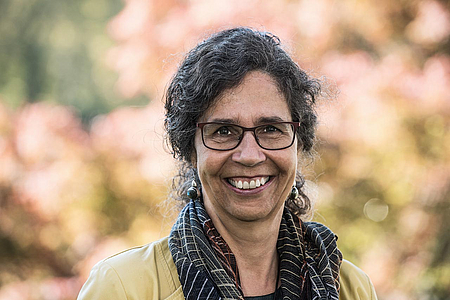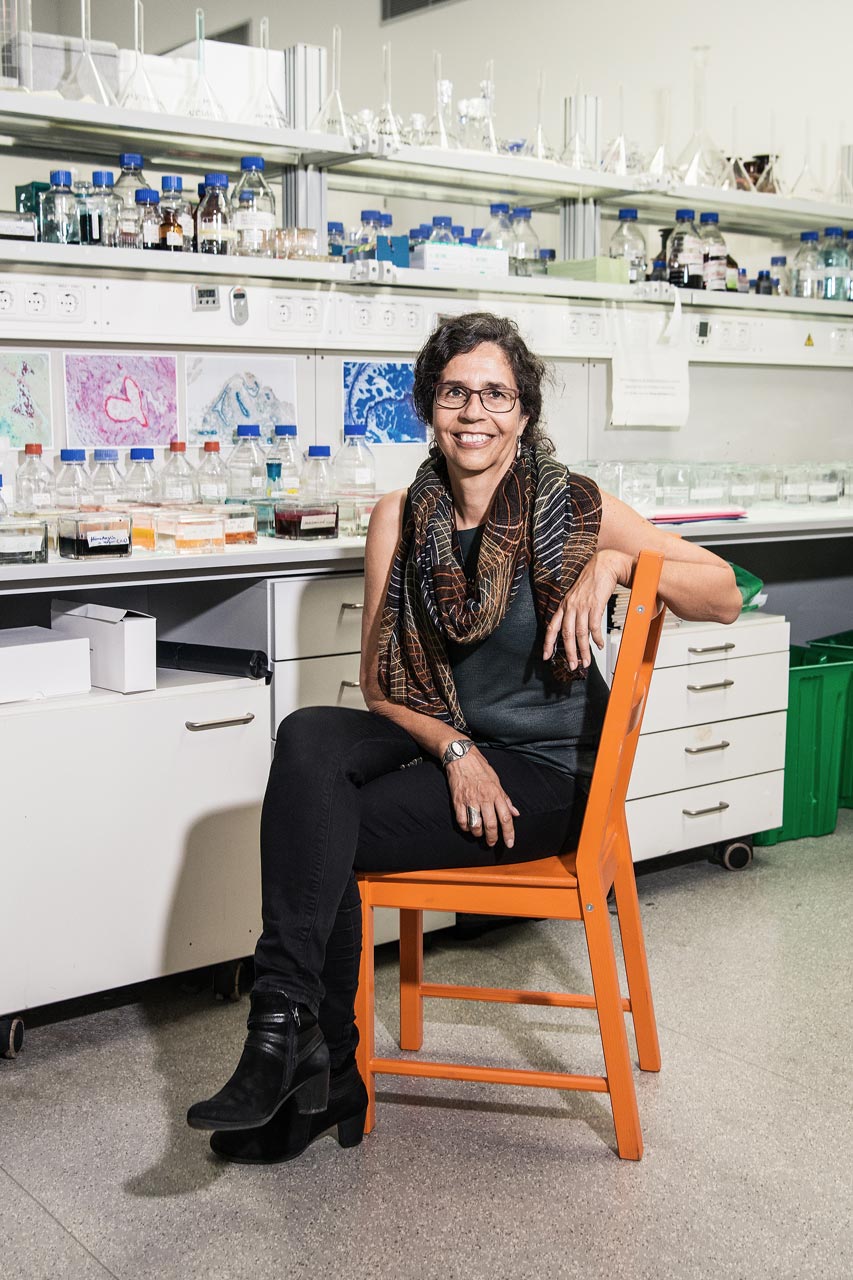Stretching and controlling of protein functions at the nano level
-----------------------------------------------------------------------------------
Update 2020:
How did the Covid-19 pandemic affect the research project? Read more about in our interview special: From Zurich to Berlin, by bike if need be – research cooperation amidst a pandemic
------------------------------------------------------------------------------------
Viola Vogel initially trained to be a physics and biology teacher, but in the end she decided against teaching and chose a career as a scientist. With her expertise in the field of mechanobiology, she brought new ideas and technologies to ETH Zürich and now, as an Einstein BIH Visiting Fellow, to Berlin as well. She talked to us about how it’s possible to change our understanding of biology and to inspire young people to study science.
Professor Vogel, you didn’t want to be a schoolteacher, but you are interested in teaching in academics. What’s so different about it?
Science isn’t about rehashing completely stale knowledge again every year. I’m interested in a combination of research on the frontiers of our present level of knowledge and teaching on those frontiers.
Don’t you think that we need more innovative teachers to awaken young people's interest in research?
That’s why public relations work is so important for us scientists. The Night of Science or Open Days are already good approaches. Here, staff can bring their children along one day a year, and during another week schoolchildren can accompany researchers to the lab. Unfortunately, such offers are mainly taken up by parents who have a connection to science themselves. Many subjects that are future-oriented and open up job opportunities are not even taught in schools. Such subjects should be included in school curricula, particularly to introduce socially relevant subject areas to schoolchildren who have no access to them in their home lives.
At the “Einstein in the dome” event, you presented your objects of research at a planetarium. Was that an odd location for a presentation about tiny molecules?
The planetarium offered an exciting atmosphere to present pictures and videos that give insights into the micro and nano worlds by telling a story. For example, you can see in detail how a macrophage devours a bacterium. It was hard to tell what kind of previous knowledge the audience would have, which is why I paid particular attention to present my research in a way that everyone could understand.
Can you explain what one studies in mechanobiology and what it all has to do with nanotechnology?

Funding program
Einstein BIH Visiting Fellows
Funding Period
2018 – 2020
Project title
Mechanobiology of tissue growth and regeneration
Research areas
Mechanobiology, bioengineering
Institution
Charité – Universitätsmedizin Berlin and Eidgenössische Technische Hochschule Zürich (ETH Zürich)
Since 2004
Professor at the Department of Health Sciences and Technology, Head of the Laboratory of Applied Mechanobiology, ETH Zürich, CH
2001 – 2003
Member, Technical Advisory Group (TAG) to US President’s Council of Advisors on Science and Technology (PCAST)
1997 – 2003
Founding Director, Center for Nanotechnology, University of Washington, Washington, USA
Life happens far off the equilibrium, yet most of our biological and medical knowledge is based on an understanding of protein structures as balanced. Proteins are the workhorses of our body and as long as we are alive, most of them have to sustain immense mechanical forces that are pulling on them. 20 years ago, nanotechnology made tools available to us to show how cells are using this to feel mechanical forces and translate them into biochemical signals. Today, we’re trying to find out how the stretching of proteins switches their function. But at most universities, mechanobiology is still a niche science. Biology is dominated by the "omics", i.e. the fields of study that are based on processing large amounts of data. These include genomics, proteomics and system biology. Biochemistry continues to be taught as if it’s based on static structures, i.e. on purely structural-functional relationships. As a rule, no attention is paid to the fact that you can mechanically switch it. When an antibody doesn’t bind, every biologist concludes that the protein isn’t present.
On the other hand, it may also be the case that through the stretching of proteins epitopes for antibodies are destroyed. As evidence of this, we produce protein fibres that we stretch in different directions. If we dye them with antibodies, you can only see the fibres that haven’t been stretched.
Do you still often have a look down the microscope yourself?
I no longer do any experiments, but I work closely with my students. It’s my role to define questions clearly, to recommend literature or to look at data and make sense of them.
Often, something unexpected results from experiments. Then I help to find out whether it was simply caused by the way the experiment was carried out or if it’s a new discovery. I myself try to start working on new questions and research topics every five years. That doesn’t mean I discard everything that’s old, but I set out in a new direction where I have to learn a great deal. I acquire this knowledge together with students and postdoctoral researchers in order to integrate new methods in our work. Hierarchy is toxic to good science; constructive exchange only works if you can also disagree with it.
You are currently collaborating with a team at the Charité. What new area are you discovering together?
A couple of years ago, we have discovered that the bacterium Staphylococcus aureus developed a kind of nano glue, which it uses to stick itself to wounds by measuring the degree of fibre tension. It can differentiate a wound from healthy tissue in this way. The link to the Charité enables us to examine the mechano-characteristics of a wide variety of organs and diseases using the nano glue which we have developed into an imaging probe. To do this, we are currently building up an entire network of activities.
Does that also involve an exchange with researchers from other fields of expertise?
The researchers in my research team come from ten different disciplines. However, it remains difficult to publish interdisciplinary research. If we publish physics or engineering-based papers in the appropriate specialist journals, no biologists or physicians would read it. To be noticed in biology or medicine, we must publish in the journals of those fields. However, their editors and experts can’t appraise mechanobiological methods and their validity. We therefore have to show that we’ve mastered their field as well. To do that, you need a team from a wide variety of disciplines.
Why do many researchers nevertheless hide in their niches?
Many researchers don’t like leaving their comfort zone, as it makes them vulnerable. For many years, research institutes were structured in such a way that you would accumulate knowledge in your own institute as much as possible and try to climb the career ladder as quickly as possible. After a few years, you know the important “players”. As soon as you dare to venture into a different field, you don’t know who they are any more. It can happen that you don’t yet even understand the questions. Physicians who’ve never studied biology barely know how they can apply their methods effectively here. They make models and assumptions that fail to connect with reality. You can write publications about it, but they don’t change biology.
How can those barriers be overcome?
You have to work together with people who have outstanding expertise in their field. Such collaborations leave their stamp on you for many years. In this sense, the Einstein BIH Visiting Fellows program can bring new knowledge, new thoughts and new people to Berlin. This makes projects possible that otherwise might never be started – high risk, but perhaps also high gain.
October 2018 / MM
